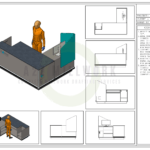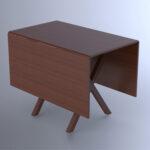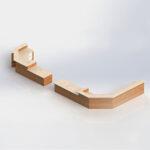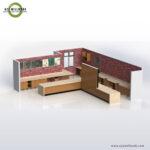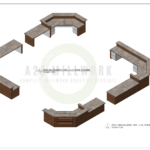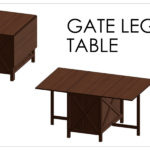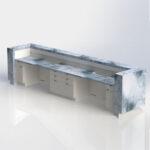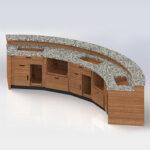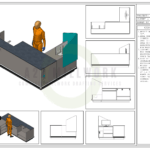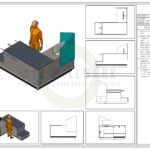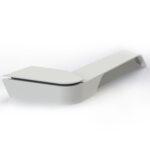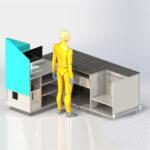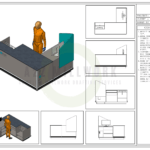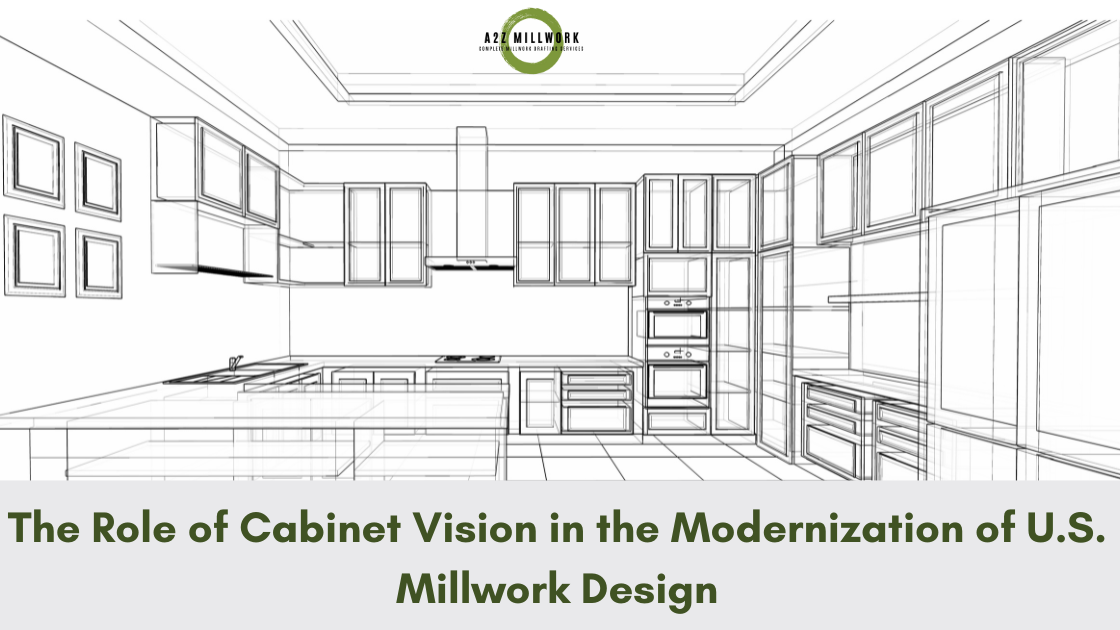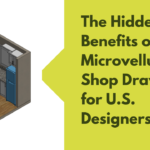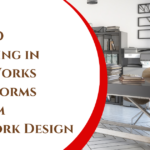Introduction
The U.S. millwork and cabinetry design industry is undergoing a transformation, fueled by technological advancements that drive efficiency and creativity. Among the tools leading this evolution, Cabinet Vision stands out as a cornerstone for innovation. Cabinet Vision’s ability to integrate seamlessly with modern workflows, improve precision, and enhance collaboration is modernizing millwork design like never before. This article explores the transformative role of Cabinet Vision, focusing on its impact on innovation, productivity, and sustainability in the U.S. millwork industry. Additionally, we delve into its seamless integration with CNC machines and the subsequent benefits for manufacturers.
Why Cabinet Vision Is Essential for Modern Millwork Design
The role of Cabinet Vision is a specialized design-to-manufacture software widely adopted by U.S. millwork and cabinetry professionals. Its capabilities extend beyond design, offering a comprehensive platform for project management, manufacturing integration, and even material optimization. Let’s examine why this tool has become indispensable:
1. Enhanced Precision and Accuracy
In the world of millwork, precision is everything. Cabinet Vision eliminates guesswork by creating highly detailed, 3D renderings of cabinetry and millwork projects. These renderings enable designers, architects, and clients to visualize the end product with unparalleled accuracy.
2. Streamlined Workflow
Cabinet Vision simplifies the workflow by unifying the design, drafting, and manufacturing stages. This is particularly crucial for U.S. manufacturers who need to manage high project volumes efficiently.
- Automated drafting ensures consistency.
- Bill of Materials (BOM) generation reduces manual errors.
- Cost estimations improve budgeting accuracy.
3. Customization for Complex Projects
One of Cabinet Vision’s most valuable features is its ability to handle complex, custom designs. This flexibility is vital in the U.S., where demand for bespoke cabinetry is on the rise. The software’s extensive library of customizable options allows millworkers to cater to unique client needs, whether they’re designing a minimalist kitchen or an intricate retail display.
The Role of Cabinet Vision in Driving Innovation
1. Integration with CNC Machines
Cabinet Vision’s integration with Computer Numerical Control (CNC) machines is a game-changer for U.S. manufacturers. This integration streamlines the production process, reduces waste, and ensures consistent quality. Key benefits include:
- Improved Productivity: CNC integration enables faster production cycles, allowing manufacturers to meet tight deadlines.
- Enhanced Precision: With automated machine instructions, errors in cutting and assembly are minimized.
- Reduced Material Waste: Optimized nesting ensures that materials are used efficiently, contributing to cost savings and sustainability.
2. 3D Visualization and Virtual Reality
With features like 3D visualization and virtual reality (VR) integration, Cabinet Vision allows stakeholders to “walk through” the design before production begins. This fosters collaboration and ensures alignment between designers, clients, and contractors.
3. Data-Driven Decision Making
Cabinet Vision’s reporting capabilities provide valuable insights into production costs, material usage, and labor requirements. This data-driven approach empowers manufacturers to make informed decisions, enhancing both profitability and project outcomes.
How Cabinet Vision Benefits U.S. Manufacturers
1. Increased Productivity
Cabinet Vision’s automation features significantly reduce the time required for drafting and production planning. For U.S. manufacturers, this translates to faster turnaround times and the ability to take on more projects without compromising quality.
2. Scalability for Large Projects
The software’s robust capabilities make it ideal for large-scale projects, such as retail or commercial spaces. By automating repetitive tasks, Cabinet Vision allows manufacturers to scale their operations efficiently.
3. Cost Savings
Through precise nesting and material optimization, Cabinet Vision minimizes waste and reduces overhead costs. This is particularly important in the U.S., where material costs can significantly impact project budgets.
Case Study: Cabinet Vision in Action
Scenario: A Commercial Retail Project
A U.S.-based millwork company was tasked with designing and manufacturing custom cabinetry for a retail chain. The project involved:
- Designing display shelves, counters, and storage units.
- Manufacturing components with consistent quality across multiple locations.
- Meeting tight deadlines to ensure timely store openings.
How Cabinet Vision Helped:
- Efficient Design: Using Cabinet Vision’s 3D modeling tools, the team created detailed designs that met the client’s aesthetic and functional requirements.
- CNC Integration: The software’s seamless integration with CNC machines ensure precise cuts and reduced production time.
- Material Optimization: By leveraging the software’s nesting capabilities, the company reduced material waste by 20%, resulting in significant cost savings.
The result was a successful project delivered on time and within budget, with consistent quality across all retail locations.
The Future of Millwork Design with Cabinet Vision
As the U.S. construction and millwork industries continue to evolve, tools like Cabinet Vision will play an increasingly important role. Here’s what the future holds:
1. Integration with AI and Machine Learning
Emerging technologies like artificial intelligence (AI) and machine learning are set to enhance Cabinet Vision’s capabilities. For instance, predictive algorithms could optimize material usage even further, while AI-driven design suggestions could inspire more innovative solutions.
2. Sustainability Initiatives
With growing emphasis on sustainability in the U.S., Cabinet Vision’s ability to minimize waste and support eco-friendly practices will be a major asset for manufacturers looking to meet green building standards.
3. Enhanced Collaboration Tools
Future updates may include more robust collaboration features, enabling real-time communication between designers, clients, and contractors. This will streamline project workflows and reduce the risk of miscommunication.
Conclusion
The Role of Cabinet Vision is revolutionizing the U.S. millwork and cabinetry design industry by driving innovation, improving productivity, and fostering sustainability. Its integration with CNC machines, advanced 3D visualization tools, and data-driven capabilities make it an indispensable tool for modern manufacturers.
For millwork companies looking to stay competitive, adopting Cabinet Vision is not just an option—it’s a necessity. By leveraging its features, manufacturers can deliver high-quality, customized solutions that meet the evolving demands of the U.S. market.
If you’re ready to take your millwork projects to the next level, consider how Cabinet Vision can transform your workflow and set you apart in a competitive industry. Embrace the future of millwork design with Cabinet Vision—the ultimate tool for innovation and efficiency.


